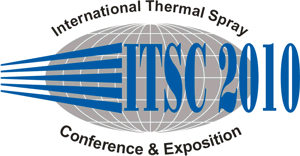
|
2055 |
|
Assessment of flame sprayed glaze layers as diffusion barriers on refractory materials
|
|
Ghislain Montavon / SPCTS - UMR CNRS 6638, Faculty of Sciences, University of Limoges, France Olivier Preziosa / SPCTS, UMR CNRS, University of Limoges, France Alain Denoirjean/ SPCTS, UMR CNRS, University of Limoges, France Paule Denoirjean/ SPCTS, UMR CNRS, University of Limoges, France Thierry Chartier/ SPCTS, UMR CNRS, Ecole National Supérieure des Céramques Industrielles, France Christian Barthélemy/ Alcan CRV, URA Electrolyse et Matériaux Réfractaires, France Véronique Laurant/ Alcan CRV, URA Electrolyse et Matériaux Réfractaires, France Didier Lombard/ Rio Tinto Alcan, LRF, France |
|
Large refractory pieces (as the ones used for examples in smelters or incinerators) do not sustain regular glazing in a kiln, mostly due to high associated costs. Still, glass coatings could find use for their physical properties (durability, chemical inertia, tightness, etc.). Thermal spraying, using an oxyacetylenic flame in particular, appears as a solution permitting to circumvent the aforementioned disadvantage. This process permits to form a layer acting as diffusion barrier at a relatively high deposition rate on very large surfaces (several square meters). The air tightness of the coating represents the main functional property of those diffusion barriers. This ongoing work is conducted to evaluate the permeability of such coatings and minimize their air tightness. When spraying glazes, the coating formation mechanisms are different from the one encountered with crystallized ceramic materials. Indeed, the high surface tension of those feedstock prevents the particles from being totally spread (i.e., |